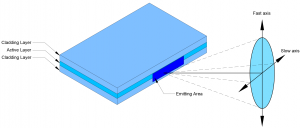While not as widely recognized as convex or concave lenses, cylindrical lenses play a crucial role in various applications due to their unique capabilities. This comprehensive guide explores the fundamentals of cylindrical lenses, shedding light on their working principles and diverse applications.
Cylindrical lenses, as the name suggests, are lenses that exhibit a cylindrical shape in at least one part. Unlike spherical lenses, which uniformly focus or spread light in all directions, cylindrical lenses specialize in directing light in a single dimension. This unique characteristic makes them indispensable in certain scenarios where other lenses fall short.
The distinctive shape of a cylindrical lens enables it to focus light from a source, such as a laser, into a straight line. The ability to manipulate one-dimensional light, either compressing or expanding it, makes cylindrical lenses versatile tools for a wide range of applications. The design of these lenses allows for the bending and focusing of light according to specific application requirements.

Cylindrical lenses come in various materials, including fused silica (JGS1, Corning 7980, JGS2), optical glass (BK7, B270, H-K9L from Ohara, Schott, CDGM, or Corning), IR materials (MgF2, Ge, CaF2, Si), and other options like optical plastics and sapphire.
| Specifications | Factory Standards | Manufacturing Limit |
| Dimension Tolerance | +/-0.03mm | +/-0.01mm |
| Center Thickness Tolerance | +/-0.03 mm | +/-0.02mm |
| Radius Tolerance | +/-0.3% | +/-0.1% |
| Surface Quality(S/D) | 40-20 | 10-5 |
| Irregularity(Plano Surface) | 1/8Lambda | < 1/15Lambda |
| Irregularity(Cylindrical Surface) | 1/4Lambda | < 1/8Lambda |
| Centration(arc min) | 3′ | 1′ |
Contact us for manufacturing limit or custom specifications.
Cylindrical lenses find widespread use in industries such as:
In essence, a cylindrical lens is a specialized optical tool crucial for directing light in a single dimension. Its significance spans diverse fields, from correcting astigmatism in ophthalmology to shaping laser beams for optimal performance. The range of cylindrical lenses available ensures their pivotal role in the development of various tools and technologies.
At Shanghai Optics, our expertise lies in providing top-quality custom Cylinder Lenses. Explore our range of custom Cylinder Lenses solutions and place your order today. For any inquiries, please feel free to contact us, and we’ll be delighted to assist you.